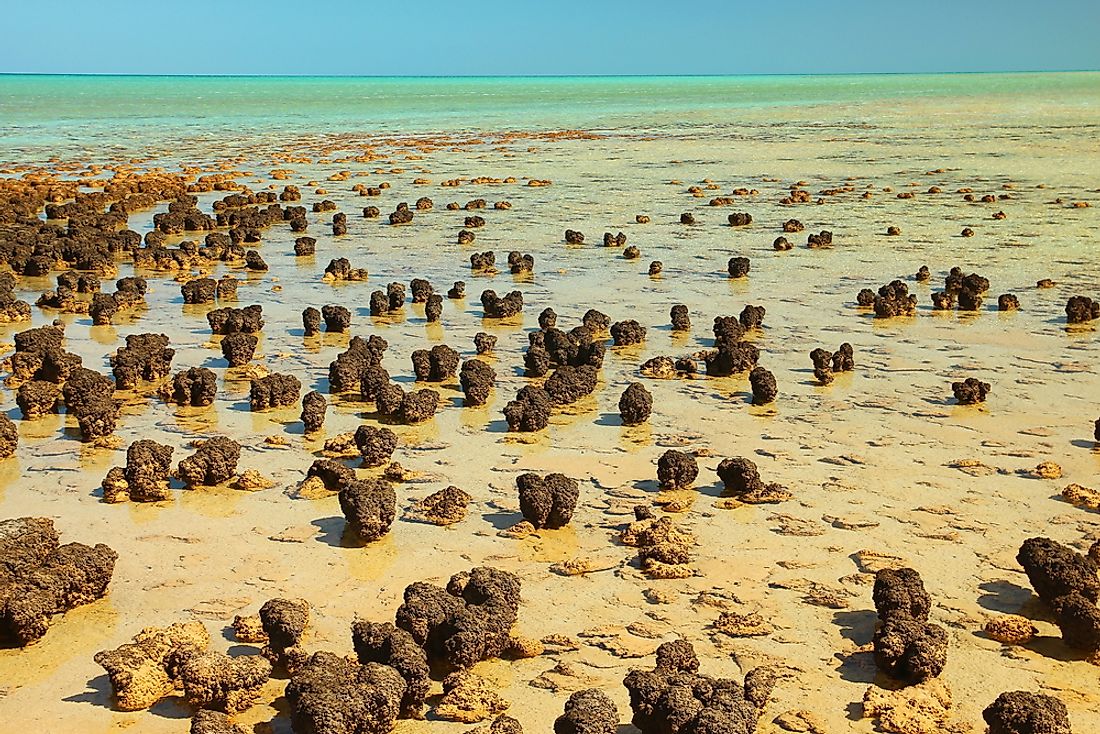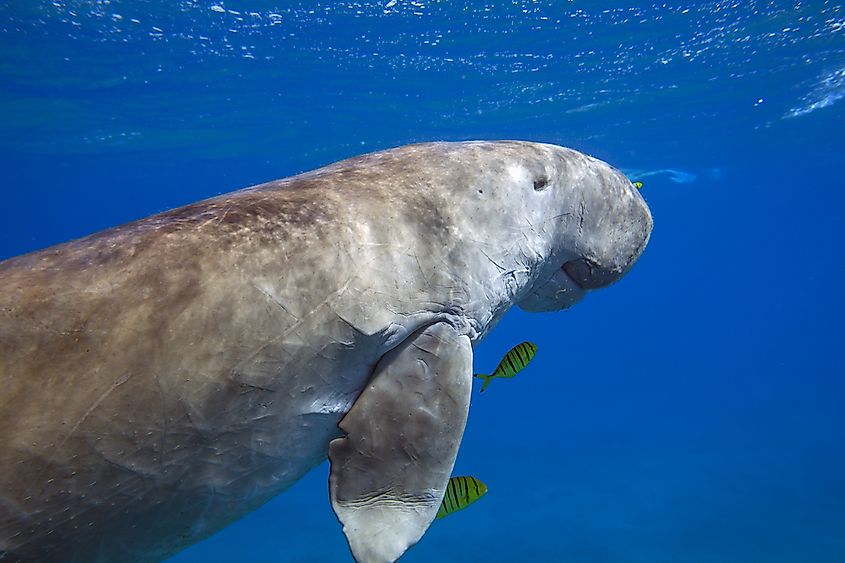Shark Bay: A UNESCO World Heritage Site In Australia

Where Is Shark Bay?
Shark Bay is located in the Indian Ocean, off the western coast of Australia, and is considered the most westerly point of the Australian continent. It covers an area of 5,429,647 acres (70% of which is water). It is comprised of 3 unique features: a large population of dugongs (large marine animals), stromatolites, and large seagrass beds. In order to protect these significant characteristics, Shark Bay and its islands were enlisted as a UNESCO World Heritage Site in 1991. This article takes a closer look at the importance of Shark Bay and the way in which this World Heritage Site is managed.

A dugong.
Why Is Shark Bay A UNESCO World Heritage Site?
Of the three previously mentioned unique features found at Shark Bay, perhaps the most important is the presence of stromatolites. Stromatolites are hard, rounded deposits created by colonies of algae. Colonies such as these were once the most common features of marine life, being the primary life found in seas for more than three billion years. Today, they are considered living fossils and are the oldest form of life in the world. The stromatolites of Shark Bay are significant for being the first algae colonies discovered in modern times that share similar characteristics with the stromatolites from the Proterozoic era.
Additionally, the waters found in Shark Bay are heavy with carbonates. In most instances, carbonates originate from coral reef systems. That is not the case in Shark Bay, making it one of the only places in the world where this particular type of carbonate can be found. The presence of these carbonates has resulted in the growth of the Wooramel Seagrass Bank. Not only is this seagrass bed the largest in the world, but it is also home to the widest variety of seagrass plant and animal species (12 different species types to be exact). This area is also home to a number of other animals including dolphins, turtles, rays, sharks, and dugong (also known as sea cows).
Shark Bay harbors many other valuable characteristics. It is home to five endangered species and an area that is hypersaline, which results in beaches that are primarily made up of seashells. Researchers find this area significant for research efforts in both biological and geomorphic evolutionary processes. Biologically, because the plant and animal species here are currently undergoing speciation; geomorphically, because the hydrological and hypersaline systems are also continually evolving.
Management Of Shark Bay
Shark Bay is conserved and protected by several treaties, regulations, and organizations. Not only is this site managed as a World Heritage Site, but it is also divided into various national parks, nature reserves, and pastoral leases.
The Western Australian government is charged with administering all strategic planning concerning Shark Bay according to the World Heritage Convention guidelines. In response to this responsibility, the government created a ministerial council, a scientific advisory committee, and a community consultative committee to help with planning, administration, and management. These decision-making bodies worked together to create the 2008-2020 Shark Bay World Heritage Property Strategic Plan which plans to help facilitate an administrative relationship between the government and local communities. As with all World Heritage Sites located in Australia, any activity that may affect Shark Bay must adhere to the regulations set forth by the Environment Protection and Biodiversity Conservation Act of 1999.











